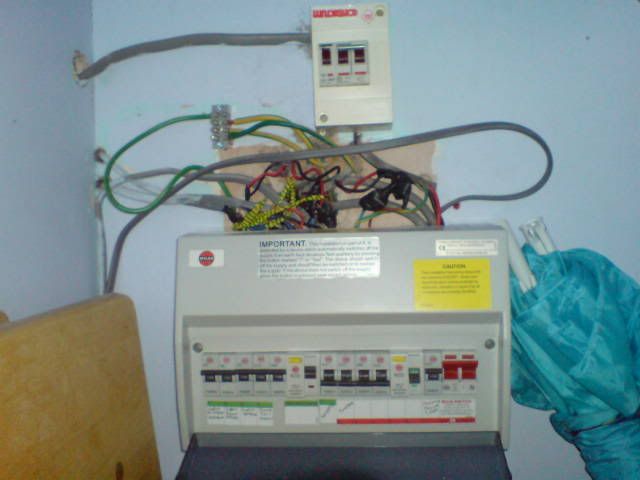Hi, i would like to add a small second consumer unit as the original one is old and out of space. The other main reason being that the original CU doesnt have RCD protection.
Recently had an isolator fitted between the meter and the original CU. So im planning to disconnect the supply at the isolator and split this using a henley block. This would then feed both the original CU and the second CU.
From the second CU i need to feed an 8.5kw shower, burglar alarm, doorbell, porch floodlight(150w) and an understairs light(60w).
However, i am a little unsure as to which is the best CU type to purchase. The two main CUs i am considering are:
http://www.screwfix.com/p/mk-sentry-4-way-rcd-garage-consumer-unit/33248?_requestid=619292
The above is described as 4way 2+2 protected. So would this mean there are 4 MCBs and just two of them are RCD protected? 1x6A, 1x16A, 1x40A and the 4th would be?
Or perhaps this one:
http://www.screwfix.com/p/volex-fully-insulated-rcd-board-shower-unit-63a-30ma-rcd/93668
But its described as just a 2-way. So the shower would be connected to the 1x63A and everything else on the 1x50A? This doesnt seem right as i think the 8.5kw shower would need a breaker of 40A max.
Would really appreciate if someone could check over my plan and view both items above. If there is another more suitable type of CU that you could recommend that would be fine too. Thanks
Recently had an isolator fitted between the meter and the original CU. So im planning to disconnect the supply at the isolator and split this using a henley block. This would then feed both the original CU and the second CU.
From the second CU i need to feed an 8.5kw shower, burglar alarm, doorbell, porch floodlight(150w) and an understairs light(60w).
However, i am a little unsure as to which is the best CU type to purchase. The two main CUs i am considering are:
http://www.screwfix.com/p/mk-sentry-4-way-rcd-garage-consumer-unit/33248?_requestid=619292
The above is described as 4way 2+2 protected. So would this mean there are 4 MCBs and just two of them are RCD protected? 1x6A, 1x16A, 1x40A and the 4th would be?
Or perhaps this one:
http://www.screwfix.com/p/volex-fully-insulated-rcd-board-shower-unit-63a-30ma-rcd/93668
But its described as just a 2-way. So the shower would be connected to the 1x63A and everything else on the 1x50A? This doesnt seem right as i think the 8.5kw shower would need a breaker of 40A max.
Would really appreciate if someone could check over my plan and view both items above. If there is another more suitable type of CU that you could recommend that would be fine too. Thanks


